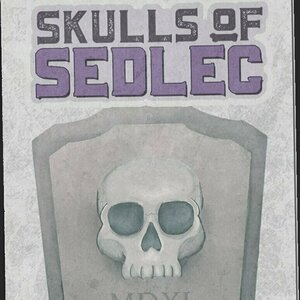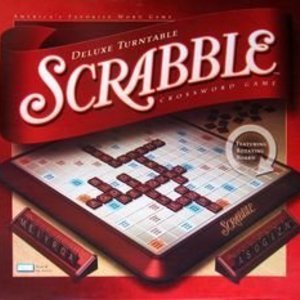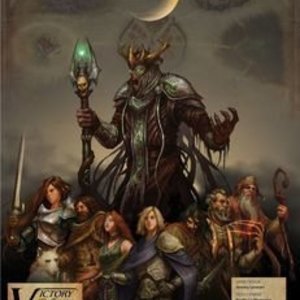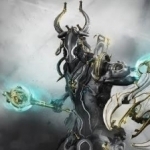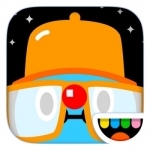Search
Biff Byford recommended Led Zeppelin by Led Zeppelin in Music (curated)
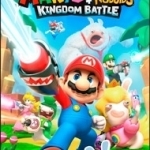
Mario + Rabbids Kingdom Battle
Video Game Watch
The Mushroom Kingdom has been torn apart by a mysterious vortex, transporting the chaotic Rabbids...
Mario Rabbids Nintendo Turn-based Shooter RPG
Purple Phoenix Games (2266 KP) rated Skulls of Sedlec in Tabletop Games
Feb 27, 2020
When it comes to board gaming, bigger does not always necessarily mean better. And that is something that Button Shy Games has really embraced. With all of their wallet games comprising of only 18 cards, they always manage to pack a lot of game into one small space. I think they’ve got the right idea – engaging gameplay, multitude of themes and mechanics, and easy storage and transport! So how does their newest game hold up to their other successful wallet games? Keep reading to find out!
Let us travel back to the 16th Century AD. You are a monk working in the Sedlec Ossuary, a chapel in the Czech Republic. The coincidental timing of the Black Plague and the Hussite Wars has led to some serious overcrowding in the Sedlec graveyard. Working under a half-blind monk, you and your fellow underlings have been tasked with exhuming graves and artfully arranging the skulls in the crypt. Who can create the most unique and tasteful display of skulls? There’s only one way to find out.
Disclaimer: We were provided a prototype review copy of this game for the purposes of this preview. The final components may vary once the Kickstarter campaign has concluded, so the published game may look differently than the one presented in these pictures. -L
Skulls of Sedlec is a game of card drafting and hand management in which players are trying to amass the most points by the end of the game. Here’s how it works. To set up, shuffle all 18 cards. Create a 2×3 grid of 6 facedown piles consisting of 3 cards each. Pick any pile and flip one card face-up from the top. You are now ready to begin! The game is played over a series of turns in which players will draft and play cards into their personal Stack, an arrangement of cards in a pyramid shape. Each card has 2 skulls on it, and each skull earns a certain number of points based on its placement in your Stack. For example, Criminal skulls are vying for redemption in the afterlife, so they score 2 points if they are adjacent to any Priest skulls. At the end of the game, the player with the highest scoring Stack is the winner!
During the game, on your turn, you will take one of these three possible actions: Dig, Collect, or Stack. When you choose to Dig, you choose 2 facedown piles in the graveyard and flip their top cards face-up. Once you have done that, choose one of the two cards you flipped to take into your hand. If you choose to Collect, you simply choose any face-up card from the graveyard and take it into your hand. There is a hand limit of 2 cards per player, though, so if you already have 2 cards in your hand you may not take the Collect action. If you choose to Stack, you select one card from your hand and add it to your Stack, following the placement rules – Stacks are built from the bottom up. Your first card will be placed into the bottom row of your Stack. Depending on how many players are in the game, your Stack will require a different number of cards in each row. A card may only be played into a higher row if it is directly centered over two cards on the row beneath it. Logical enough! The game ends when each player has completed their Stack. Points are then added, and the highest score wins.
As I mentioned earlier, the size of the game does not always dictate the quality of the game, and Skulls of Sedlec is the perfect example of that. For only consisting of 18 cards, it takes a good deal of strategy to claim victory. There are 5 different types of skulls, and they earn points in different ways depending on their placement. You really have to be thinking in advance as to how you want to play the cards in your hand, and what other skulls you need to pick up to maximize your score. You can also see the Stacks of your opponents, so you know what you’re up against. You need an adaptive strategy for success based on the current cards available in the graveyard, as well as potentially anticipating your opponents’ moves. Be careful, though, because once a card has been played to your Stack, it cannot be moved.
Components. Again, this is just a preview copy of the game, but the card quality is already great. It might be something upgraded during the Kickstarter campaign, but if it’s not, you’re still getting a high quality game. Of course, the trademark wallet is on par with the rest of the wallet series, and it protects the cards well. The artwork of Skulls of Sedlec might not be awe-inspiring, but it is still colorful, thematic, and well-done. I appreciate the simplicity of the cards because it makes it easier to see the card types throughout the game and final scoring. You can clearly tell which skulls are which, so the game does not grind to a halt while trying to figure out what the scoring requirements are for a particular skull. And each skull type has a corresponding symbol, which can help our color-blind friends play the game – instead of relying solely on color, the symbols help differentiate the cards. So big kudos there!
As someone who does a fair amount of solo playing, I would like to mention the solo expansion of Skulls of Sedlec, Monstrance. Again, this is a preview of the solo expansion, so final rules and components may vary from those described here. When playing Skulls of Sedlec as a solo game, you will be creating a Stack like in a multiplayer game, as well as a Feature. The Feature you build will have a shape different to that of your normal Stack, and is determined by the Feature card you select at game setup. You will also select a second Feature card, which will be flipped over to reveal a new condition or effect for the game (for example, Romantics in the Stack do not score). Create a graveyard of 4 facedown piles of cards, evenly spread throughout the piles. You are then ready to play.
Gameplay is similar to that of a multiplayer game, but the solo player does not have a hand of cards. Instead, every card that you select will be immediately played into your Stack or your Feature. Placement rules are the same for the Stack, and cards in your Feature must be supported from below or adjacently. When both your Stack and Feature are complete, the game is over and you tally up your score. The solo expansion offers scoring milestones to compare with your score. See if you can best yourself and become a Legendary Artisan instead of remaining a Humble Monk.
Personally, I am not a huge fan of beat-your-own-score solo expansions. That being said, the gameplay of the Monstrance solo expansion still requires decent strategy and thought to maximize your final score. The addition of Features to solo play add another level of strategy because placement is just as important there as it is in your general Stack. Another neat twist is the addition of effects/conditions in solo play. They affect your strategy and make for a unique game every play.
Overall, I would say that Skulls of Sedlec is one of my favorite ButtonShy Games that I have played. It’s fast to play, simple to teach and learn, yet strategic enough that it keeps you engaged the entire time. Another thing I love about it is that it is only a 2-3 player game. We all know that getting together for game nights can be tricky, so I can see myself bringing Skulls of Sedlec to many game nights in which maybe only a few of us could attend. I’m glad I got the opportunity to preview this game, and I will be following the progress of the campaign for sure. If you’re looking for a small filler that still keeps your brain working, definitely consider backing the Skulls of Sedlec campaign!
Let us travel back to the 16th Century AD. You are a monk working in the Sedlec Ossuary, a chapel in the Czech Republic. The coincidental timing of the Black Plague and the Hussite Wars has led to some serious overcrowding in the Sedlec graveyard. Working under a half-blind monk, you and your fellow underlings have been tasked with exhuming graves and artfully arranging the skulls in the crypt. Who can create the most unique and tasteful display of skulls? There’s only one way to find out.
Disclaimer: We were provided a prototype review copy of this game for the purposes of this preview. The final components may vary once the Kickstarter campaign has concluded, so the published game may look differently than the one presented in these pictures. -L
Skulls of Sedlec is a game of card drafting and hand management in which players are trying to amass the most points by the end of the game. Here’s how it works. To set up, shuffle all 18 cards. Create a 2×3 grid of 6 facedown piles consisting of 3 cards each. Pick any pile and flip one card face-up from the top. You are now ready to begin! The game is played over a series of turns in which players will draft and play cards into their personal Stack, an arrangement of cards in a pyramid shape. Each card has 2 skulls on it, and each skull earns a certain number of points based on its placement in your Stack. For example, Criminal skulls are vying for redemption in the afterlife, so they score 2 points if they are adjacent to any Priest skulls. At the end of the game, the player with the highest scoring Stack is the winner!
During the game, on your turn, you will take one of these three possible actions: Dig, Collect, or Stack. When you choose to Dig, you choose 2 facedown piles in the graveyard and flip their top cards face-up. Once you have done that, choose one of the two cards you flipped to take into your hand. If you choose to Collect, you simply choose any face-up card from the graveyard and take it into your hand. There is a hand limit of 2 cards per player, though, so if you already have 2 cards in your hand you may not take the Collect action. If you choose to Stack, you select one card from your hand and add it to your Stack, following the placement rules – Stacks are built from the bottom up. Your first card will be placed into the bottom row of your Stack. Depending on how many players are in the game, your Stack will require a different number of cards in each row. A card may only be played into a higher row if it is directly centered over two cards on the row beneath it. Logical enough! The game ends when each player has completed their Stack. Points are then added, and the highest score wins.
As I mentioned earlier, the size of the game does not always dictate the quality of the game, and Skulls of Sedlec is the perfect example of that. For only consisting of 18 cards, it takes a good deal of strategy to claim victory. There are 5 different types of skulls, and they earn points in different ways depending on their placement. You really have to be thinking in advance as to how you want to play the cards in your hand, and what other skulls you need to pick up to maximize your score. You can also see the Stacks of your opponents, so you know what you’re up against. You need an adaptive strategy for success based on the current cards available in the graveyard, as well as potentially anticipating your opponents’ moves. Be careful, though, because once a card has been played to your Stack, it cannot be moved.
Components. Again, this is just a preview copy of the game, but the card quality is already great. It might be something upgraded during the Kickstarter campaign, but if it’s not, you’re still getting a high quality game. Of course, the trademark wallet is on par with the rest of the wallet series, and it protects the cards well. The artwork of Skulls of Sedlec might not be awe-inspiring, but it is still colorful, thematic, and well-done. I appreciate the simplicity of the cards because it makes it easier to see the card types throughout the game and final scoring. You can clearly tell which skulls are which, so the game does not grind to a halt while trying to figure out what the scoring requirements are for a particular skull. And each skull type has a corresponding symbol, which can help our color-blind friends play the game – instead of relying solely on color, the symbols help differentiate the cards. So big kudos there!
As someone who does a fair amount of solo playing, I would like to mention the solo expansion of Skulls of Sedlec, Monstrance. Again, this is a preview of the solo expansion, so final rules and components may vary from those described here. When playing Skulls of Sedlec as a solo game, you will be creating a Stack like in a multiplayer game, as well as a Feature. The Feature you build will have a shape different to that of your normal Stack, and is determined by the Feature card you select at game setup. You will also select a second Feature card, which will be flipped over to reveal a new condition or effect for the game (for example, Romantics in the Stack do not score). Create a graveyard of 4 facedown piles of cards, evenly spread throughout the piles. You are then ready to play.
Gameplay is similar to that of a multiplayer game, but the solo player does not have a hand of cards. Instead, every card that you select will be immediately played into your Stack or your Feature. Placement rules are the same for the Stack, and cards in your Feature must be supported from below or adjacently. When both your Stack and Feature are complete, the game is over and you tally up your score. The solo expansion offers scoring milestones to compare with your score. See if you can best yourself and become a Legendary Artisan instead of remaining a Humble Monk.
Personally, I am not a huge fan of beat-your-own-score solo expansions. That being said, the gameplay of the Monstrance solo expansion still requires decent strategy and thought to maximize your final score. The addition of Features to solo play add another level of strategy because placement is just as important there as it is in your general Stack. Another neat twist is the addition of effects/conditions in solo play. They affect your strategy and make for a unique game every play.
Overall, I would say that Skulls of Sedlec is one of my favorite ButtonShy Games that I have played. It’s fast to play, simple to teach and learn, yet strategic enough that it keeps you engaged the entire time. Another thing I love about it is that it is only a 2-3 player game. We all know that getting together for game nights can be tricky, so I can see myself bringing Skulls of Sedlec to many game nights in which maybe only a few of us could attend. I’m glad I got the opportunity to preview this game, and I will be following the progress of the campaign for sure. If you’re looking for a small filler that still keeps your brain working, definitely consider backing the Skulls of Sedlec campaign!
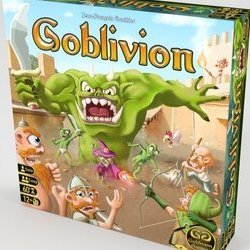
Goblivion
Tabletop Game
'Goblivion' is a Solo or 2 players cooperative deckbuilding card game. You play the role of the King...
Boardgames CardGames DeckBuildinggames
Purple Phoenix Games (2266 KP) rated Darkest Night (First edition) in Tabletop Games
Jun 12, 2019
One of the best parts of the board gaming experience is finding a fun group of people with whom to play! Sometimes, though, coordinating a game night is easier said than done. We all must occasionally forego the group experience and face the world as the Lonely Only. But fear not! The world of solo-play is a vast and exciting realm! What follows is a chronicle of my journey into the solo-playing world – notes on gameplay, mechanics, rules, difficulty, and overall experience with solo variations of commonly multiplayer games! I hope this will provide some insight as you continue to grow your collection, or explore your already owned games!
Once prosperous, your kingdom has fallen victim to a powerful Necromancer who has shrouded the realm in darkness. His minions traverse the land doing his bidding, and his army, as well as his powers, continue to grow. All hope is lost….or is it? Four heroes band together in a final attempt to defeat this evil being. Each brings unique powers and strategies to the table, and success will come in one of two ways – by defeating the Necromancer in direct combat, or by gathering Holy Relics and performing a ritual to undo his powers. But be warned: the Necromancer grows stronger with every passing moment, so be sure your chosen strategy is the right one. Otherwise you too will fall victim to the Necromancer’s might.
Darkest Night is a cooperative game where players take on the role of the heroes attempting to defeat the Necromancer. Each turn has 4 steps – Perform any start-of-turn actions, draw/resolve an Event card, perform one action, and defend against Blights (monsters). Each equipped with a unique set of powers, the heroes must work together to search the land for Holy Relics and destroy Blights before the kingdom is overrun. Once all of the heroes have had their turn, the Necromancer gets his turn, which entails advancing the Darkness track, moving towards the closest detected hero, and creating more Blights. Victory comes in two forms – ritual or combat. If the heroes collectively uncover three Holy Relics, they can use them in a ritual to break the Necromancer’s powers. Or if a hero gets strong enough, they could directly fight the Necromancer. If, at any point, the Monastery is overrun by Blights, the game ends in failure and the kingdom has fallen into darkness.
DISCLAIMER – This review is for the Darkest Night (First Edition) base game. There is a second edition, and several expansions, but I have not had experience with any of those, so my thoughts are solely based on the First Edition base game. -L
I’m just going to be up-front and let you know that I am not a huge fan of this game solo. The main reason is that this game is for four heroes, regardless of actual player count. So playing solo means that I have to control all four heroes. Controlling one hero, I can do. Controlling two heroes takes more focus, but is usually manageable. But controlling four heroes at once? Madness! At least for me it is. There is so much more for a single person to keep track of, and it can be pretty overwhelming. There are so many variables to keep track of, I often end up making mistakes – forgetting to draw Event cards, accidentally using one hero’s ability when it is a different hero’s turn, forgetting to give one hero a turn in a round because I thought they already had one, etc. If I am lucky, I will catch a mistake in-progress, or one turn later, and can rectify it. But to be honest, of all the mistakes I make while playing Darkest Night, I probably won’t catch 25% of them. Which can either make a game super easy, or super brutal. You might tell me, “Focus!” or “Pay better attention!” but believe me, I’m trying! I just feel like four heroes for one person is too much.
Patience is a virtue, but apparently I have none when it comes to this game. And by that, I mean that I feel like it takes an eternity to accomplish anything in this game. On your turn, you only get one single action. And movement is an action. Picture this – I am trying to move my hero to the opposite end of the kingdom (at least 2 spaces away). I am going to have to spend 2 complete rounds (active hero turn, other hero turns, Necromancer turn, x2) just to get there. And then once I finally get there, I have to wait for the 3rd round to even do anything in that location! I just get frustrated at the fact that something as simple as moving a few spaces takes multiple rounds to accomplish. Since everything takes so long to do, you have to be thinking so far into the future with every turn. That makes it difficult for me to strategize, and the game just feels so inefficient, especially in solo play, when you have to control all of the heroes. It can be tricky enough planning a few turns in advance for a single hero, but being in charge of all heroes just makes the job more complicated. And maybe I’m just not patient enough for this game, but I think that if every hero got two actions per turn, the game would be a lot more manageable.
This will come as no surprise to you, but I enjoy this game more in a group rather than solo. This game is cooperative, and I like being able to talk strategy with my fellow gamers, rather than trying to figure everything out for each of the four heroes by myself. Group play also allows me to focus my attention on one single hero instead of multiple, which makes the game feel less overwhelming to me. And perhaps the second edition or expansions address some of the issues I have with the game, but for the time being, Darkest Night is low on my list of solo games.
https://purplephoenixgames.wordpress.com/2019/01/04/solo-chronicles-darkest-night/
Once prosperous, your kingdom has fallen victim to a powerful Necromancer who has shrouded the realm in darkness. His minions traverse the land doing his bidding, and his army, as well as his powers, continue to grow. All hope is lost….or is it? Four heroes band together in a final attempt to defeat this evil being. Each brings unique powers and strategies to the table, and success will come in one of two ways – by defeating the Necromancer in direct combat, or by gathering Holy Relics and performing a ritual to undo his powers. But be warned: the Necromancer grows stronger with every passing moment, so be sure your chosen strategy is the right one. Otherwise you too will fall victim to the Necromancer’s might.
Darkest Night is a cooperative game where players take on the role of the heroes attempting to defeat the Necromancer. Each turn has 4 steps – Perform any start-of-turn actions, draw/resolve an Event card, perform one action, and defend against Blights (monsters). Each equipped with a unique set of powers, the heroes must work together to search the land for Holy Relics and destroy Blights before the kingdom is overrun. Once all of the heroes have had their turn, the Necromancer gets his turn, which entails advancing the Darkness track, moving towards the closest detected hero, and creating more Blights. Victory comes in two forms – ritual or combat. If the heroes collectively uncover three Holy Relics, they can use them in a ritual to break the Necromancer’s powers. Or if a hero gets strong enough, they could directly fight the Necromancer. If, at any point, the Monastery is overrun by Blights, the game ends in failure and the kingdom has fallen into darkness.
DISCLAIMER – This review is for the Darkest Night (First Edition) base game. There is a second edition, and several expansions, but I have not had experience with any of those, so my thoughts are solely based on the First Edition base game. -L
I’m just going to be up-front and let you know that I am not a huge fan of this game solo. The main reason is that this game is for four heroes, regardless of actual player count. So playing solo means that I have to control all four heroes. Controlling one hero, I can do. Controlling two heroes takes more focus, but is usually manageable. But controlling four heroes at once? Madness! At least for me it is. There is so much more for a single person to keep track of, and it can be pretty overwhelming. There are so many variables to keep track of, I often end up making mistakes – forgetting to draw Event cards, accidentally using one hero’s ability when it is a different hero’s turn, forgetting to give one hero a turn in a round because I thought they already had one, etc. If I am lucky, I will catch a mistake in-progress, or one turn later, and can rectify it. But to be honest, of all the mistakes I make while playing Darkest Night, I probably won’t catch 25% of them. Which can either make a game super easy, or super brutal. You might tell me, “Focus!” or “Pay better attention!” but believe me, I’m trying! I just feel like four heroes for one person is too much.
Patience is a virtue, but apparently I have none when it comes to this game. And by that, I mean that I feel like it takes an eternity to accomplish anything in this game. On your turn, you only get one single action. And movement is an action. Picture this – I am trying to move my hero to the opposite end of the kingdom (at least 2 spaces away). I am going to have to spend 2 complete rounds (active hero turn, other hero turns, Necromancer turn, x2) just to get there. And then once I finally get there, I have to wait for the 3rd round to even do anything in that location! I just get frustrated at the fact that something as simple as moving a few spaces takes multiple rounds to accomplish. Since everything takes so long to do, you have to be thinking so far into the future with every turn. That makes it difficult for me to strategize, and the game just feels so inefficient, especially in solo play, when you have to control all of the heroes. It can be tricky enough planning a few turns in advance for a single hero, but being in charge of all heroes just makes the job more complicated. And maybe I’m just not patient enough for this game, but I think that if every hero got two actions per turn, the game would be a lot more manageable.
This will come as no surprise to you, but I enjoy this game more in a group rather than solo. This game is cooperative, and I like being able to talk strategy with my fellow gamers, rather than trying to figure everything out for each of the four heroes by myself. Group play also allows me to focus my attention on one single hero instead of multiple, which makes the game feel less overwhelming to me. And perhaps the second edition or expansions address some of the issues I have with the game, but for the time being, Darkest Night is low on my list of solo games.
https://purplephoenixgames.wordpress.com/2019/01/04/solo-chronicles-darkest-night/

Terminator Genisys: Future War
Games
App
Terminator Genisys: Future War is a free-to-play mobile strategy game where the human Resistance is...
Mothergamer (1607 KP) rated Warframe in Video Games
Apr 3, 2019
A friend of mine suggested that I check out the game Warframe. They thought I would like it since I like games like Phantasy Star Online and Mass Effect. Warframe is a free to play co-operative third person shooter game. It's a science fiction futuristic role playing game. You can play Warframe on the PC, Xbox One, or the Playstation 4. Unfortunately there is no cross platform play with this, but at least you have a choice about which one you want to play on.
You play as a member of the Tenno, a race of ancient warriors who have awoken from cryosleep and find themselves at war with a race known as the Grineer who appear to be human clones with metal mods and the Corpus a corporation with robots and laser technology. I found that concept pretty intriguing and decided to check it out on my computer.
There are three starter warframes to choose from; Mag, Volt, and Excalibur. I decided to go with Mag and started my adventure in Warframe and named her Pirotess Dragontamer like my Final Fantasy XIV character. The introductory tutorial is quite helpful which gave me a chance to get used to the battle controls. I also liked that you can change the colors of your warframe and customize it to your tastes.
My Mag warframe is pretty cool.
There are so many missions you can do on each planet ranging from rescue missions to spy missions. You can do these missions solo, but it's definitely easier to do them with friends. The max number of people on a team is four and it does make a mission go a lot faster when you have a full team. Finding a team is fairly easy as you can make your match settings public and the game will match you with people who are doing the same mission.
Pirotess doing a mission with her friends.
I'm glad I tried Warframe out because I love it. It's a lot of fun to play and the story is very interesting. The graphics for the game look great and the voice acting and music is really good as well. It's hard to believe it's a free to play online game because there is so much content and so many great areas to explore.
You can also do crafting in the game and it isn't boring. In many of the missions you get blueprints for weapons and different warframes which you can build in your ship. Level grinding is not boring at all because of the variety of the missions. You also have solo missions for ranking up your warframe. The max level for a warframe is 30 and you can level up your weapons and pets as well.
Pirotess on her Frost warframe.
My husband Ron plays Warframe with me as well and he's really enjoying it also. It's a lot of fun playing the game together and with our friends. Having a good clan helps too because they can help you get missions done as well as helping with getting blueprints and items you need for crafting and modding equipment.
I'm also looking forward to the new expansion for the game, Plains of Eidolon because it looks fantastic and there's going to be even more things added including a new warframe. Warframe is so much fun and I love just exploring and doing all the events and missions with everyone. It's fast paced and fits in my wheel house for sci-fi space games. Now, I'm off to explore more of the galaxy!
You play as a member of the Tenno, a race of ancient warriors who have awoken from cryosleep and find themselves at war with a race known as the Grineer who appear to be human clones with metal mods and the Corpus a corporation with robots and laser technology. I found that concept pretty intriguing and decided to check it out on my computer.
There are three starter warframes to choose from; Mag, Volt, and Excalibur. I decided to go with Mag and started my adventure in Warframe and named her Pirotess Dragontamer like my Final Fantasy XIV character. The introductory tutorial is quite helpful which gave me a chance to get used to the battle controls. I also liked that you can change the colors of your warframe and customize it to your tastes.
My Mag warframe is pretty cool.
There are so many missions you can do on each planet ranging from rescue missions to spy missions. You can do these missions solo, but it's definitely easier to do them with friends. The max number of people on a team is four and it does make a mission go a lot faster when you have a full team. Finding a team is fairly easy as you can make your match settings public and the game will match you with people who are doing the same mission.
Pirotess doing a mission with her friends.
I'm glad I tried Warframe out because I love it. It's a lot of fun to play and the story is very interesting. The graphics for the game look great and the voice acting and music is really good as well. It's hard to believe it's a free to play online game because there is so much content and so many great areas to explore.
You can also do crafting in the game and it isn't boring. In many of the missions you get blueprints for weapons and different warframes which you can build in your ship. Level grinding is not boring at all because of the variety of the missions. You also have solo missions for ranking up your warframe. The max level for a warframe is 30 and you can level up your weapons and pets as well.
Pirotess on her Frost warframe.
My husband Ron plays Warframe with me as well and he's really enjoying it also. It's a lot of fun playing the game together and with our friends. Having a good clan helps too because they can help you get missions done as well as helping with getting blueprints and items you need for crafting and modding equipment.
I'm also looking forward to the new expansion for the game, Plains of Eidolon because it looks fantastic and there's going to be even more things added including a new warframe. Warframe is so much fun and I love just exploring and doing all the events and missions with everyone. It's fast paced and fits in my wheel house for sci-fi space games. Now, I'm off to explore more of the galaxy!

Mom Is In Control | For Ambitious Women Who Are Committed To Evolving The Way They Live, Work, Play And Parent.
Podcast
Mom Is In Control is a podcast created for you, the woman who wants more, the overwhelmed ambitious...

